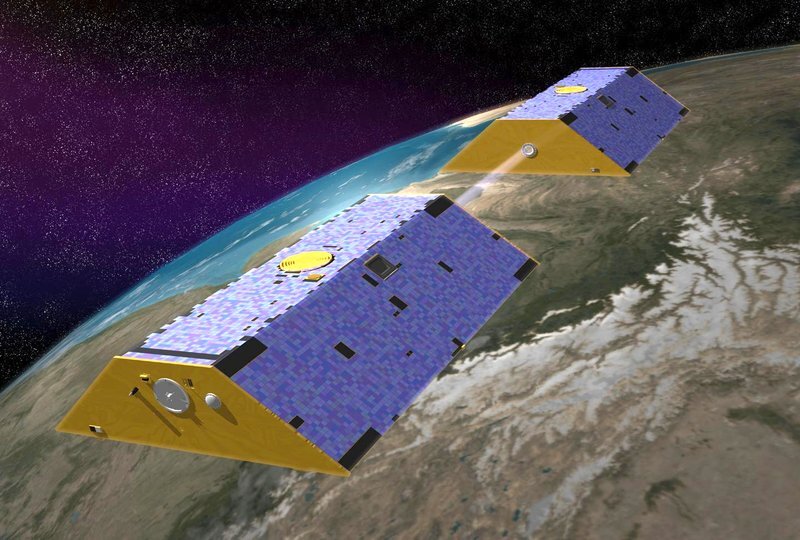News | March 17, 2022
JPL's GRACE Mission at 20 Years

March 17, 2022 marks the 20th anniversary of the launch of NASA’s Gravity Recovery and Climate Experiment, or GRACE, mission. The product of a partnership between NASA and Germany, GRACE consisted of identical twin satellites designed to measure Earth’s gravity field. The mission pioneered the use of microwave ranging for gravity studies, tracking the distance between the two satellites as they orbited. Using GRACE’s data, mission scientists were able to trace the movement of water on and under Earth’s surface and monitor the changing mass of Earth’s ice sheets and glaciers.
Over GRACE’s 15 years of operation, mission scientists traced the loss of land ice from ice sheets and mountain glaciers due to climate change, witnessed the depletion of California’s ground water during a prolonged drought, and contributed to understanding ocean circulation. GRACE data were incorporated into NOAA’s Drought Monitor products, and analyzed alongside other data sets, and helped better quantify the global water cycle.
GRACE’s pioneering measurement technique was used by the subsequent GRAIL lunar mission and GRACE’s own successor, GRACE Follow-On, which was launched in 2018.
JPL has numerous other March anniversaries. March 30, 1951, was the Army’s award of the Corporal missile production contract to JPL. Explorer 3, JPL’s second successful orbital mission, launched March 26, 1958. Pioneer 4, launched March 3, 1959, flew past the Moon. JPL’s third mission to Mars, Mariner 7, was launched on March 27, 1969. Mariner 10, the first mission to Mercury, had its first flyby on March 29, 1974. March 22, 2010, was the Spirit rover’s last contact with Earth. And JPL’s Dawn mission arrived in orbit around dwarf planet Ceres on March 6, 2015.





